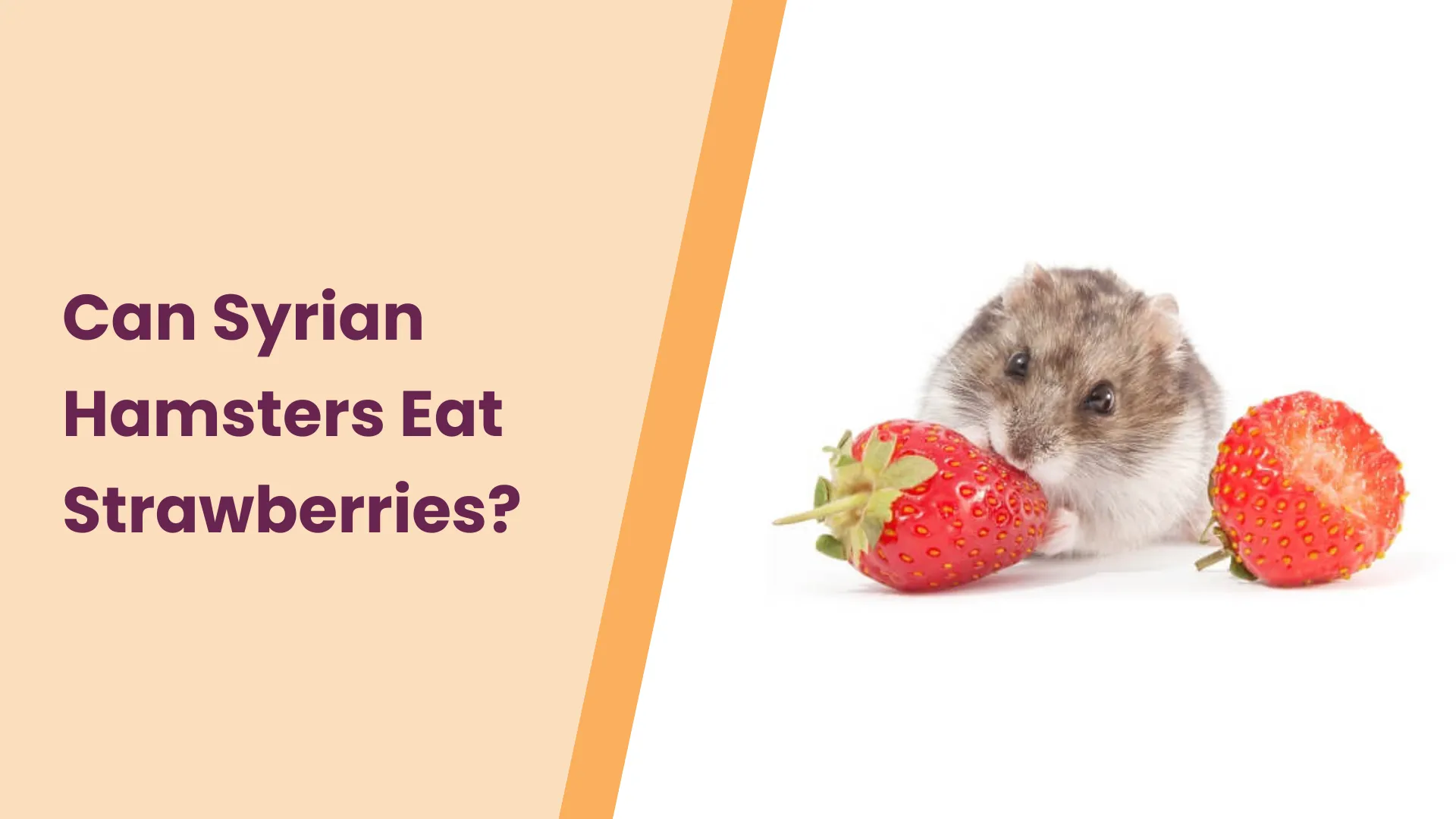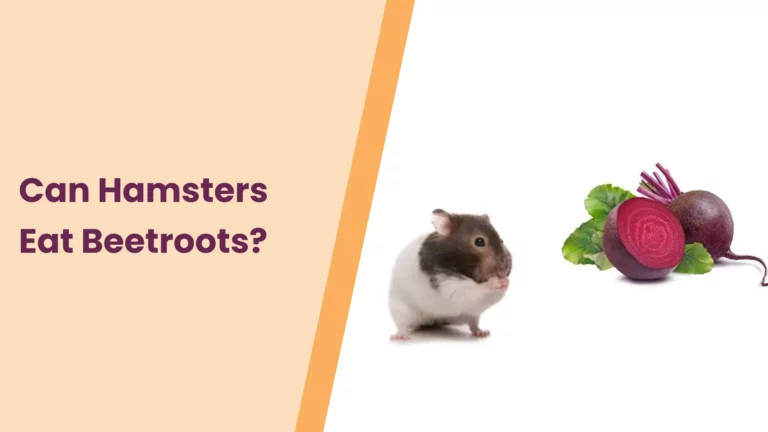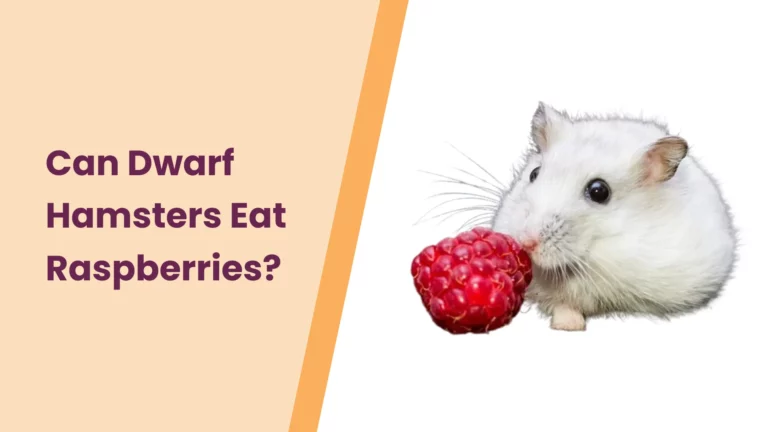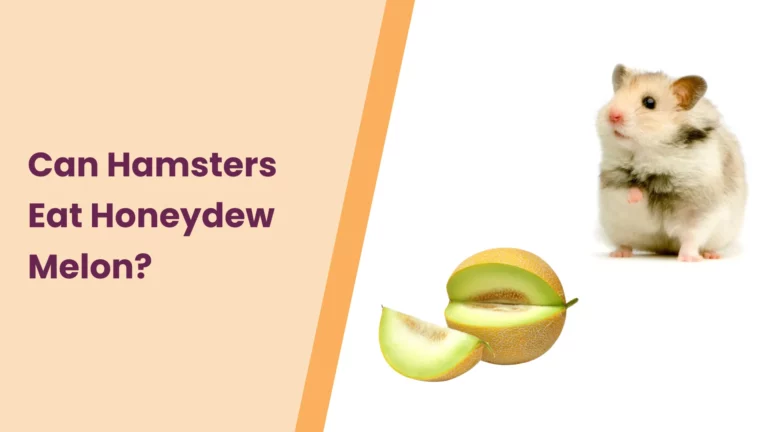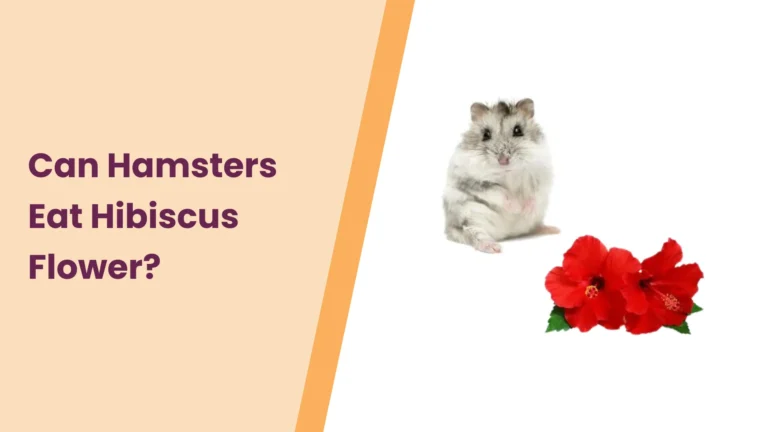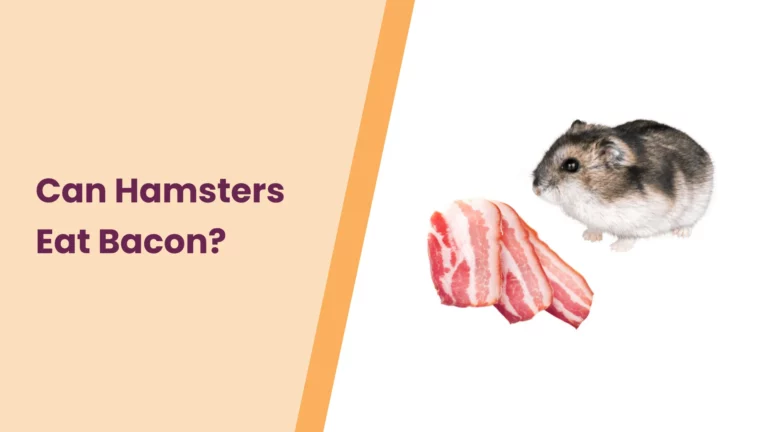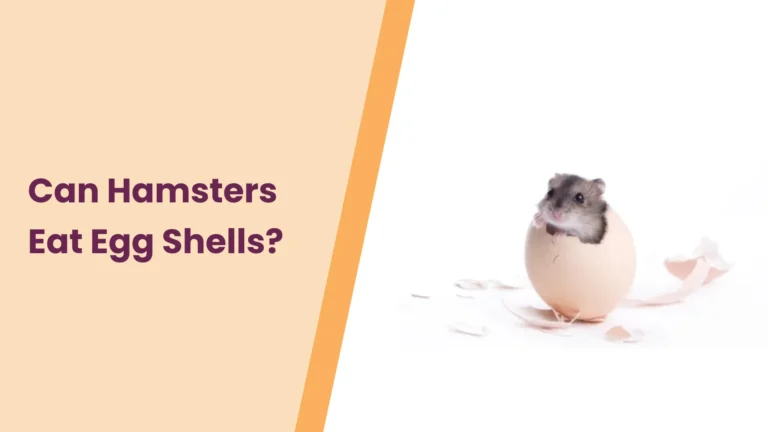Can Syrian Hamsters Eat Strawberries? An Ultimate Guide
Imagine this: you’re a devoted hamster parent, always on the lookout for ways to pamper your furry little friend. You’ve probably heard that hamsters can enjoy a variety of treats, including fruits. But when it comes to strawberries, you might find yourself wondering, ‘Can Syrian hamsters eat strawberries?‘
Well, the answer is not as straightforward as you might think. In this comprehensive guide, we’ll dive deep into the world of hamster care to unravel the mystery of whether these sweet, juicy berries can be a part of your hamster’s diet. Get ready to explore the nutritional benefits, potential risks, and how to serve strawberries safely to your beloved Syrian hamster.
Let’s embark on this delicious and educational journey together!
Understanding Syrian Hamster Diet
Syrian hamsters, also known as Golden hamsters, are natural foragers in the wild. In their natural habitat, these little explorers thrive on a diet primarily consisting of seeds, grains, and vegetation. While this might sound like a straightforward diet, it’s important to recognize that hamsters in captivity have different nutritional needs.
When caring for a Syrian hamster in your home, you become the steward of their dietary well-being. Unlike in the wild, where they can select a wide range of foods, you’re responsible for providing a balanced and safe diet. This includes a high-quality commercial hamster food that is specifically formulated to meet their dietary requirements.
However, hamsters are known for their love of variety, and that’s where the question of strawberries and other fruits often arises. Fruits, including strawberries, can be introduced as occasional treats, but it’s crucial to maintain a proper balance to ensure your furry friend’s health.
In the following sections, we’ll explore the details of incorporating strawberries into your Syrian hamster’s diet and how to do so safely. So, let’s dive into the exciting world of hamster nutrition!
Nutritional Benefits of Strawberries
Strawberries, those vibrant and succulent red gems, are renowned for their delectable taste, but their nutritional profile is equally impressive, making them a potentially appealing choice for your beloved Syrian hamster.
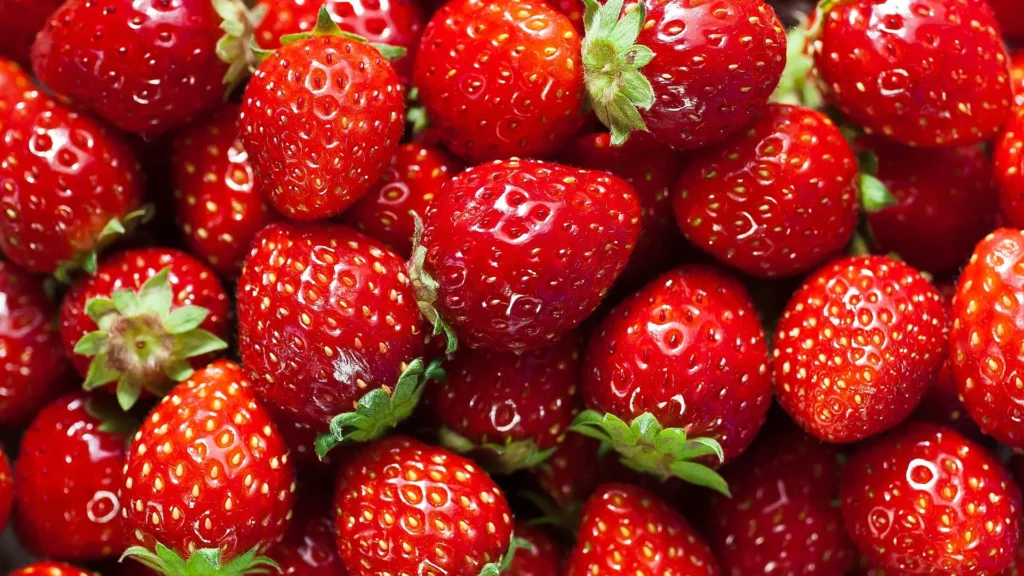
These delightful berries are packed with vitamins and minerals that can contribute to your pet’s well-being. Strawberries are rich in vitamin C, an essential nutrient known for its antioxidant properties. For your furry friend, this means potential support for their immune system, helping them stay healthy and vibrant.
Strawberries also offer a generous dose of dietary fiber, which can aid in digestion. Keeping your hamster’s digestive system in good working order is crucial for their overall health, and fiber can help regulate their bowel movements. But the goodness doesn’t stop there.
Strawberries contain essential minerals like potassium and manganese, which play various roles in maintaining proper bodily functions. While these benefits sound promising, it’s essential to remember that moderation is key. Excessive consumption of strawberries can lead to issues due to their sugar content, which we’ll discuss in the ‘Risks and Concerns’ section. So, while strawberries do have nutritional perks, it’s crucial to serve them judiciously to ensure your hamster’s well-being.
Can Syrian Hamsters Eat Strawberries?
Now that we’ve explored the nutritional benefits of strawberries, it’s time to answer the big question: Can Syrian hamsters eat strawberries? The answer is yes, but with a few essential caveats. Syrian hamsters can indeed enjoy the occasional taste of strawberries, provided they are offered in moderation.
These sweet, juicy treats can add variety to their diet and provide a delightful change from their regular hamster food. However, it’s crucial to remember that strawberries should not become a staple in their meals. The key to safely introducing strawberries into your hamster’s diet is moderation.
Given the high sugar content in strawberries, overindulgence can lead to health issues, including obesity and dental problems. As a responsible hamster owner, you should view strawberries as a special treat, not a daily snack. When offering strawberries to your Syrian hamster, remember that portion size matters.
A small, bite-sized piece once or twice a week is typically sufficient. Ensure that the strawberries are fresh, ripe, and thoroughly washed, free from pesticides or harmful residues.
Additionally, if you’re introducing strawberries to your hamster’s diet for the first time, do so gradually. Observe their reaction and monitor for any signs of digestive upset or allergies. As with any new food, it’s essential to be cautious and attentive to your pet’s well-being.
So, while strawberries can be a delightful addition to your hamster’s diet, the key to their enjoyment lies in offering them responsibly and in moderation. In the following sections, we’ll explore the potential benefits and concerns associated with feeding strawberries to your Syrian hamster, so you can make informed decisions about their diet.
Potential Health Benefits
While it’s clear that strawberries can be a tasty treat for your Syrian hamster, it’s equally important to explore the potential health benefits that these little red wonders bring to the table.
Boosting Immunity: Strawberries are renowned for their high vitamin C content. For your hamster, this means a potential immune system boost. Vitamin C is an antioxidant that can help protect cells and tissues from damage, keeping your furry friend healthier and more resilient.
Digestive Health: Dietary fiber is another boon from strawberries. This fiber can aid in your hamster’s digestion, promoting regular bowel movements and reducing the risk of constipation. A healthy digestive system is a cornerstone of your pet’s overall well-being.
Hydration Support: Strawberries have a high water content, which can help keep your hamster hydrated. Proper hydration is essential, and these juicy berries can contribute to maintaining the right balance of fluids in their body.
Variety in the Diet: Offering strawberries can add variety to your hamster’s diet, preventing mealtime monotony. Variety can be mentally stimulating for your pet and may encourage them to eat well-rounded meals.
However, it’s crucial to reiterate that while these potential health benefits are enticing, strawberries should be offered in moderation. Their sugar content can be a double-edged sword, and overindulgence can lead to health issues. As we’ll delve into in the ‘Risks and Concerns’ section, striking the right balance is key to ensuring your hamster’s health and happiness.
In the end, strawberries can be a delightful and nutritious addition to your hamster’s diet when introduced responsibly and in proper portions. The key lies in moderation, as it often does in the world of pet care. So, let’s move on to understanding the potential risks associated with these delectable fruits and how to safeguard your hamster’s well-being.
Risks and Concerns
As we’ve discussed the potential benefits of strawberries for your Syrian hamster, it’s equally vital to explore the potential risks and concerns associated with incorporating these sweet treats into their diet.
Sugar Content: Strawberries are naturally sweet, and while that’s part of their appeal, it’s also a point of concern. Hamsters are highly sensitive to sugar, and excessive sugar intake can lead to obesity, diabetes, and dental problems. It’s crucial to remember that a little goes a long way. Treat strawberries as an occasional indulgence rather than a daily snack.
Digestive Upset: Introducing new foods to your hamster’s diet, including strawberries, can sometimes lead to digestive upset. To avoid this, offer small portions initially and gradually increase the amount if your pet tolerates them well. Always be attentive to your hamster’s reactions and health.
Allergies: Just like humans, hamsters can have food sensitivities and allergies. Some hamsters may not react well to strawberries, experiencing symptoms like diarrhea, bloating, or skin irritations. If you notice any unusual reactions after introducing strawberries, it’s best to discontinue them from your hamster’s diet.
Pesticide Residues: Strawberries, when not properly washed, can carry pesticide residues that are harmful to your hamster. To mitigate this risk, make sure to wash strawberries thoroughly before serving them to your pet. Organic strawberries may also be a safer option.
In summary, while strawberries can provide a tasty and nutritious treat for your Syrian hamster, it’s essential to be mindful of the potential risks and concerns. Moderation is the key to a healthy and happy hamster.
By offering strawberries as an occasional delight and closely monitoring your pet’s well-being, you can enjoy the benefits of this fruit while minimizing potential issues. In the next section, we’ll delve into how to prepare strawberries safely for your hamster’s consumption.
Preparing Strawberries for Syrian Hamsters
Now that we know that strawberries can be a delightful addition to your Syrian hamster’s diet, the next step is to ensure you prepare and serve them safely. Here are some essential steps to keep in mind:
1. Washing Thoroughly: Before offering strawberries to your hamster, it’s crucial to wash them thoroughly. Strawberries often carry pesticide residues, which can be harmful to your pet. Rinse the strawberries under running water and gently scrub them with a soft brush to remove any potential residues. You can also opt for organic strawberries, which tend to have fewer pesticide concerns.
2. Removing Stems and Seeds: Strawberries come with stems and seeds that can be difficult for your hamster to handle. Make sure to cut the strawberries into small, bite-sized pieces, removing stems and seeds. This ensures that your hamster can enjoy the sweet and juicy flesh without any choking hazards.
3. Serving Fresh: Hamsters tend to enjoy their food when it’s fresh. As strawberries can spoil quickly, it’s best to serve them immediately after preparation. If there are any leftovers, remove them from your hamster’s enclosure to prevent them from becoming moldy.
4. Portion Control: As we’ve emphasized throughout this guide, moderation is key. Offer only a small portion of strawberries as an occasional treat, usually no more than once or twice a week. A tiny piece is typically sufficient to satisfy your hamster’s taste buds.
5. Observing Your Hamster: Every hamster is unique, and their response to strawberries may vary. After introducing this fruit to their diet, keep a close eye on your pet. Watch for any signs of digestive upset, allergies, or other adverse reactions. If you notice any issues, discontinue feeding strawberries.
By following these steps, you can provide your hamster with a safe and enjoyable strawberry experience. Remember, the goal is to enhance your pet’s diet while ensuring their well-being, so stay attentive to their preferences and health. In the next section, we’ll explore a variety of other safe fruits that you can incorporate into your hamster’s diet for added flavor and nutrition.
Other Safe Fruits for Syrian Hamsters
While strawberries can be a delightful treat for your Syrian hamster, it’s always a great idea to diversify their diet with other safe fruits. Here’s a list of some other fruits that you can consider including in your hamster’s diet:
1. Apples: Apples are a crunchy and healthy option for your hamster. Remember to remove seeds and core, and offer small, bite-sized pieces.
2. Bananas: These are not only delicious but also packed with essential nutrients. However, due to their high sugar content, limit banana servings to small portions.
3. Blueberries: Blueberries are rich in antioxidants and can be a great addition to your hamster’s diet in moderation.
4. Pears: Like apples, pears offer a crunchy texture and are rich in dietary fiber. Remove seeds and cut them into small pieces.
5. Papayas: Papayas are a tropical fruit that hamsters can enjoy occasionally. They provide a unique flavor and are a good source of vitamins and minerals.
6. Watermelon: Hamsters tend to love the juicy nature of watermelon, making it an enticing summertime treat. Ensure you remove the seeds and rind, serving only the flesh.
7. Cranberries: These tiny, tart fruits can be a refreshing addition to your hamster’s diet, but offer cranberries sparingly due to their acidity.
When introducing new fruits, always remember the golden rule: moderation. Just like with strawberries, offer these fruits in small portions as occasional treats, ideally once or twice a week. Monitoring your hamster’s response to these different fruits is essential, as individual preferences can vary.
By adding variety to your hamster’s diet, you can keep their meals exciting and nutritionally balanced. Experiment with different fruits, observe your pet’s reactions, and create a well-rounded menu that keeps them happy and healthy. In the following section, we’ll wrap up our exploration of hamster care and summarize the key takeaways from this guide.
Conclusion
In the delightful world of Syrian hamster care, strawberries can indeed be a tasty addition, providing potential health benefits when offered in moderation. While these juicy berries offer vitamin C, fiber, and hydration support, the key to their inclusion lies in responsible feeding.
Always remember that moderation is paramount, as hamsters are sensitive to sugar, and overindulgence can lead to health issues. In our journey through hamster nutrition, we’ve explored not only the potential benefits of strawberries but also the risks, concerns, and safe alternatives.
We’ve learned to wash, prepare, and serve strawberries while keeping a watchful eye on our furry friends. And we’ve discovered a world of other safe fruits that can add variety to their diet.
As a hamster parent, your dedication to their well-being shines through your choices. By offering occasional strawberry treats and diversifying their diet with safe fruits, you’re ensuring their happiness and health. With this guide, you’re equipped to strike the perfect balance for your beloved hamster, enriching their life with delightful flavors and nutritional variety. Here’s to many more happy and healthy moments with your furry companion!
“We’re excited to hear from you, our valued readers and fellow hamster enthusiasts. Your thoughts, experiences, and questions are not only welcome but highly encouraged. Have you tried feeding strawberries to your Syrian hamster? How did they react?
Are there other fruits or tips you’d like to share with the community? Whether you’re a seasoned hamster parent or just starting your journey, your insights can be invaluable. So, don’t hesitate to leave your comments, share your stories, and spark engaging discussions below.
Feel free to share this guide with your fellow hamster aficionados on social media or other platforms, allowing them to benefit from the knowledge you’ve gained here. Together, we can create a vibrant and supportive hamster care community. Let’s keep our furry friends happy, healthy, and well-nourished!” – Hamsterpit

